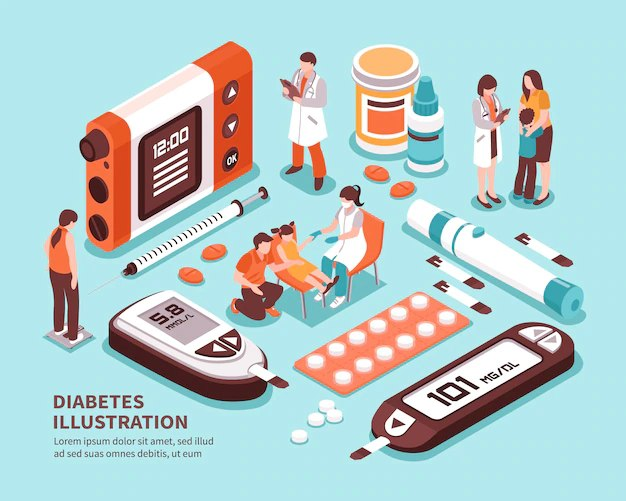
 Instagram
Instagram
When is the best time to check blood sugar for type 2 diabetes?

Table of Contents
Related products
What’s covered?
When is the best time to check blood sugar for type 2 diabetes?

What is Diabetes mellitus?
Diabetes mellitus (DM) is a chronic metabolic disorder caused either by insufficient insulin or insulin that doesn't work right which leads to an increase in the blood glucose level. Type 2 Diabetes falls into the latter category.
Diabetes Management
Treatment approaches for the treatment of Type 2 diabetes should be tailored and suited to the diabetic person's specific characteristics and personal variables and should enable self-management. These variables include the individual's social, medical (including complications), and genetic factors.
Self-management of diabetes positions the diabetic person at the centre of care and enables them to make everyday decisions regarding their disease to improve health outcomes. Self-management involves the patient adopting lifestyle changes and preferences with a preventive program that includes good food, frequent physical activity, medication, and blood glucose monitoring.
Blood sugar testing through monitoring glucose levels is one of the most accurate ways to manage Type 2 diabetes and understand how diets, medications, and activities affect glucose levels. Blood sugar readings helps you and your healthcare team control diabetes.
Diabetes complications
The above-mentioned strategies can help people with diabetes avoid or stop chronic complications like heart attacks, strokes, digestive and kidney diseases, blindness, and amputations.
When your blood sugar is too low (hypoglycaemia), it could also be fatal because it causes hypoglycaemic coma. So, it's essential to keep an eye on our sugar regularly.

How can we monitor blood sugar levels?
A blood sugar reading can be done with a fingerstick and a glucose meter or with a continuous glucose monitoring (CGM) device.
Most meters allow you to save your blood sugar results, and you can use an app on your smartphone to track your blood sugar levels. If you do not have a smartphone, keep a written log of your records.
The haemoglobin A1C test often called the HbA1C test, is a quick blood test that gauges your typical blood sugar levels in the preceding three months. It evaluates how well your blood sugar has been regulated throughout that period. It is the primary instrument for monitoring the effectiveness of treatment over time.
When is the best time to do a blood sugar test?
How often type 2 diabetics should test their blood glucose depends on their treatment (oral drugs, insulin, or lifestyle changes), A1C level, risk of hypoglycaemia, and treatment goals.
Blood sugar testing schedule pre-prandially, i.e., before breakfast, and post-prandially, i.e., two hours after each main meal. Testing too soon after a meal or snack will likely yield high results. The blood sugar level tests are done by a blood glucose meter.
Even though these are the most prominent times to check your blood sugar, here are other instances where it is advisable to do a blood sugar level test:
-
Symptoms of low blood sugar levels include getting sleepy, sweating, dizzy, tingling lips, shivering, or trembling.
-
If you consume too much or skip meals or snacks,
-
Either beforehand or after you work out.
-
If you are feeling ill,
-
If you consume alcohol
-
If you accidentally took an excessive amount of insulin or diabetes medication, or if you took your medication at the incorrect time.
A1C testing should be performed at least twice a year. This test is conducted every three months when you're first diagnosed and every six months after your blood sugar stabilizes to ensure good blood glucose control.
We've got a great selection of blood sugar tests kits and test strips available here so you can easily keep track of your health.














































